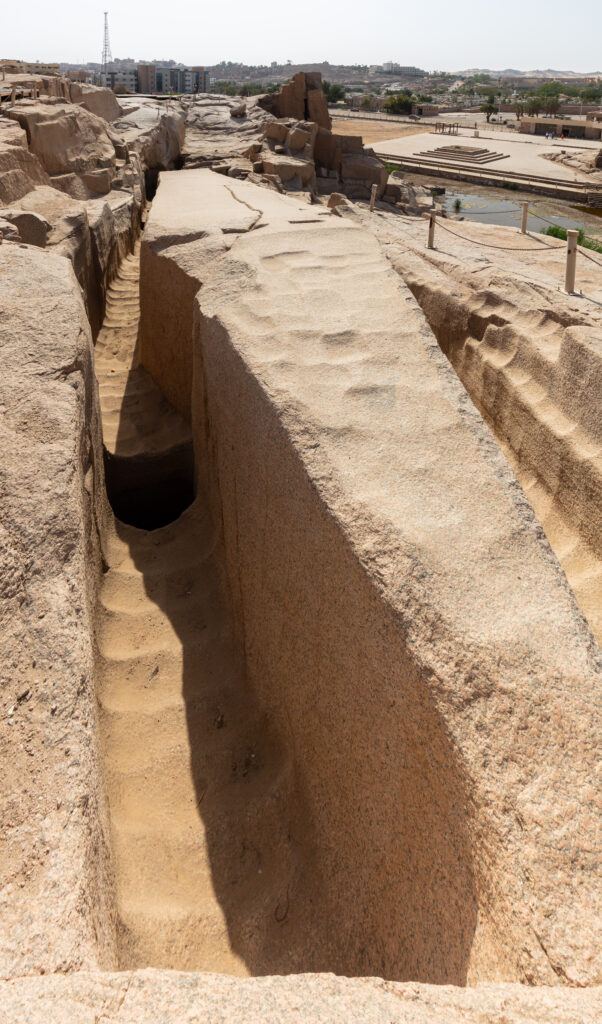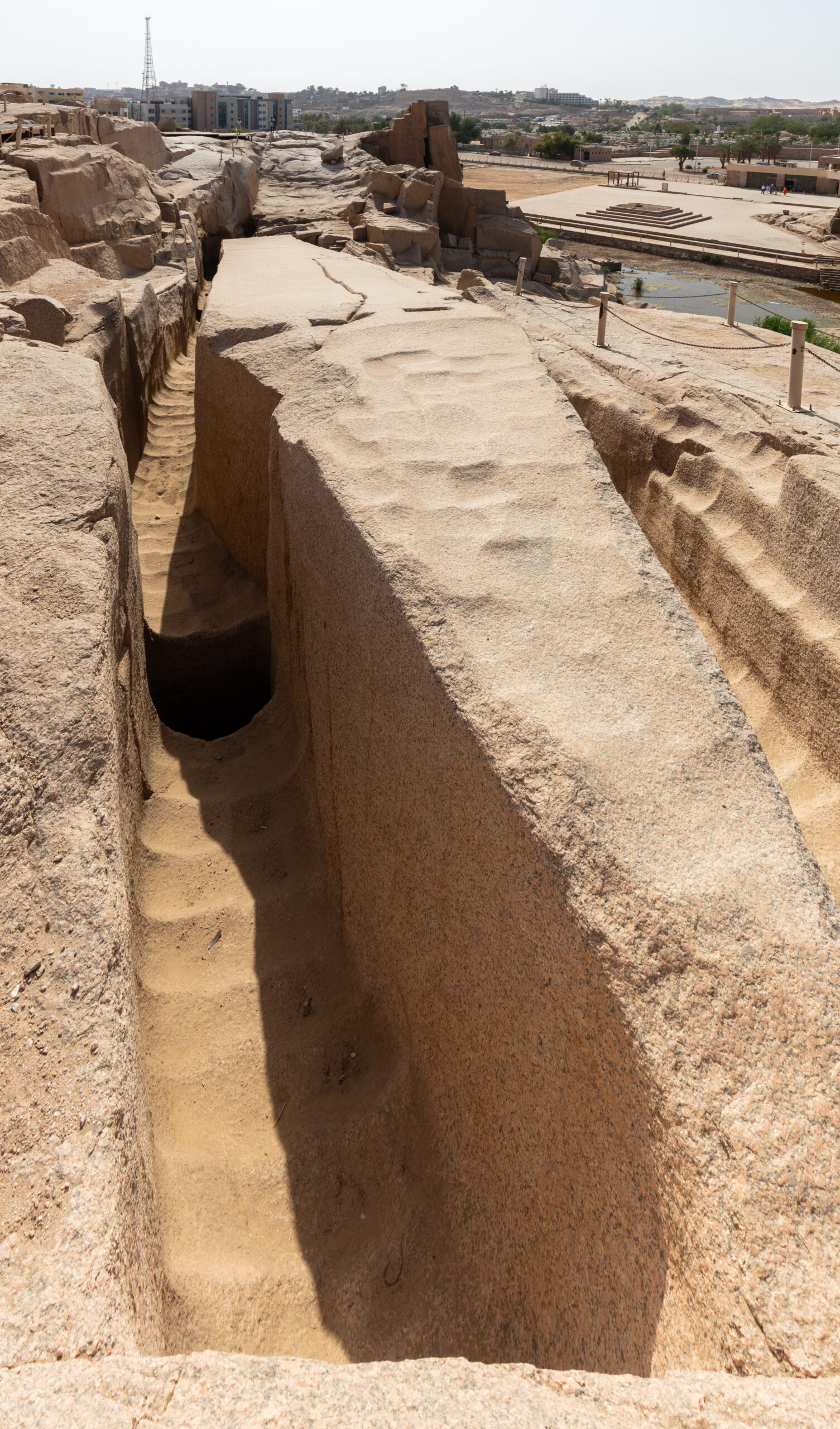L'obélisque manquant
Il s'agit du plus ancien obélisque connu de l'Égypte antique. Il est situé dans la partie nord des anciennes carrières d'Assouan. Découvert en 1921, il a été inscrit au patrimoine mondial de l'UNESCO en 1979, au sein des monuments nubiens d'Abou Simbel à l'île de Philae.
Importance de l'obélisque incomplet

L'importance de cet obélisque inachevé ou incomplet réside dans la richesse des informations qu'il fournit sur les outils et les techniques utilisés par les anciens Égyptiens pour sculpter ces magnifiques obélisques, qui se dressent fièrement devant les temples et dans leurs cours.
Le corps des obélisques s'amincit à mesure qu'il s'élève, se terminant par une petite pyramide. La plupart des obélisques, surtout les plus imposants, sont sculptés dans du granit rose. L'obélisque manquant est également connu sous le nom d'obélisque d'Hatchepsout, datant peut-être de l'époque de la reine Hatchepsout.
Cet obélisque n'a jamais été achevé, non pas à cause d'une erreur d'un ouvrier, mais à cause d'une fissure dans la roche mère. Il est resté à son emplacement d'origine, séparé de tous côtés sauf le fond. S'il avait été excavé, il aurait atteint 41 mètres de haut, avec une base d'environ 4,5 mètres de côté, et pesé environ 1 168 tonnes.
Autour du site, de nombreuses boules de diorite ont été utilisées pour tailler ces obélisques dans la roche mère. La diorite étant considérée comme plus dure que le granit, ces boules étaient martelées autour de l'obélisque pour le séparer et l'extraire de la roche. Ces boules noir-vert, certaines entières, d'autres brisées, ont un diamètre moyen de 15 à 25 cm et pèsent entre 5 et 8 kilogrammes. Les ouvriers les utilisaient comme marteau pour tailler la pierre.
In addition to its historical and architectural significance, the site in Aswan offers insight into the daily lives of ancient craftsmen. The surrounding quarry reveals not only the techniques used for large-scale stone carving but also the social organization behind such massive projects. Workers likely lived nearby, relying on a coordinated system of labor, tools, and planning. The precision of the work, even by today’s standards, is astonishing. Visiting the area allows travelers to connect deeply with ancient Egypt—not just through its temples and tombs, but through the raw, unfinished story of a monument that never reached the sky.
The Importance of the Unfinished Obelisk in Aswan
The Unfinished Obelisk in Aswan stands as one of the most remarkable and revealing archaeological sites in Egypt. Carved directly into the bedrock of an ancient granite quarry, this massive monument offers a rare and invaluable glimpse into the techniques and challenges faced by ancient Egyptian stonemasons. If completed, it would have been the largest obelisk ever constructed, measuring an estimated 42 meters in height and weighing over 1,000 tons.
Commissioned during the reign of Queen Hatshepsut in the 15th century BCE, the monument was likely intended to adorn the Karnak Temple in Luxor. However, a critical crack discovered during the carving process led to the abandonment of the project. This flaw preserved the site in its incomplete state and has become a unique window into ancient engineering methods. Tool marks and chisel lines are still visible on the surface, providing archaeologists with evidence of the labor-intensive techniques used to shape and extract obelisks from solid rock.
Beyond its archaeological value, the Unfinished monument underscores the ambition and skill of ancient Egyptian builders. The scale of the monument reveals their understanding of geometry, material strength, and transportation challenges—particularly the daunting task of moving such a massive object from the quarry to its final location, likely using sleds and Nile barges.
Today, the Unfinished monument is a major attraction in Aswan, drawing visitors and scholars alike. It not only enriches our understanding of ancient Egyptian construction but also symbolizes the enduring legacy of a civilization that aimed to reach monumental heights, even when nature intervened. Its preserved state makes it one of the most instructive sites for anyone interested in the wonders of ancient technology and the human drive to create lasting monuments.
Popular Hurghada Visites

